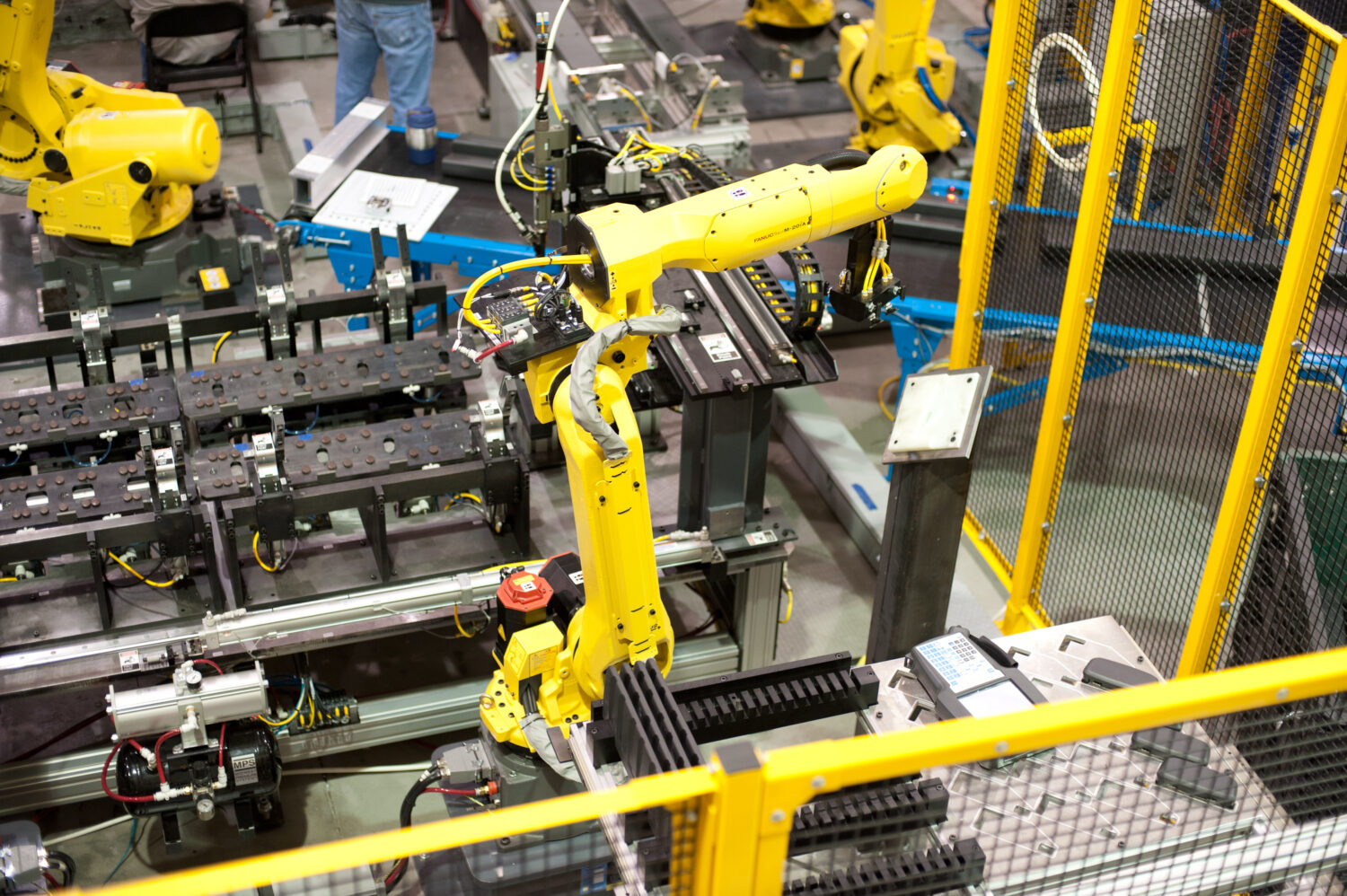
Robotic Automation improves quality and cuts costs, but the real reason manufacturers automate is ROI. Realizing the projected savings hinges on minimizing implementation costs while maximizing equipment utilization. Both are getting easier, thanks to these 10 industrial automation trends.
1. Industrial Internet of Things (IIoT) Technology
As demand grows, sensors for data acquisition are becoming less expensive and more capable. In parallel, options for data transmission methods are growing (Ethernet, wireless, Bluetooth) while package sizes keep shrinking.
2. Less Hierarchical Automation Architectures
The boundaries between sensors, PLCs and PCs are blurring. As shop-floor devices gain ever greater computing power, decision-making will move closer to the factory floor. Industry observers anticipate the old five-layer automation hierarchy condensing to three levels.
3. Open Architecture Automation Tools
Proprietary hardware and software left manufacturers a choice of either locking into a single vendor or contending with islands of automation. Today, there’s a clear trend toward open architectures. By removing communication barriers, this will simplify integration while stimulating more innovation. Robot Operating System (ROS) open-source software is one example; FANUC’s FIELD product another.
4. Application Portability
It’s increasingly possible to run applications or software from one manufacturer on hardware from another.
5. Convergence Between Business Systems and Automation Hardware
Anticipate tighter integration between operational and information technology, based in part on the growth of cloud products for data-intensive computation.
6. Growth of “Edge” Devices
These are simple, low-cost computing devices deployed right on the machines, pumps and motors used throughout a factory. In other words, at the edge of the network. Expect their ranks to swell dramatically.
7. Increased Availability of “Big Data” Analysis Tools
More tools for data visualization, growth of cloud-based and local “historian” products — all enabling deeper insights into manufacturing performance, helping to pinpoint the causes of loss or waste and identify improvement actions.
8. Smart Sensor Proliferation
As sensors become more aware and able to communicate information rather than data, expect engineers to add them everywhere.
9. More Use of Wireless Networks
Wi-Fi, Bluetooth and similar products will become omnipresent, increasing flexibility in shop-floor equipment configuration.
10. Affordable Collaborative Robots
The “cobot” market is growing dramatically. Manufacturers in many industries are seeing huge potential for these machines that don’t need expensive, space-consuming cages. Easily programmed, these will be deployed quickly to wherever there's a need for repeatable motion. Volume growth will lower prices and new opportunities will open as the user base gains experience. This will draw in new cobot manufacturers and encourage the development of even more capable collaborative robots.
How Industry Will Benefit
The impact of these industrial automation trends goes beyond improving affordability. Manufacturers will have access to real-time data about their equipment and processes. Sophisticated analysis programs will identify patterns and trends, delivering new insights into the causes of inefficiency and waste.
Equipment availability will improve as maintenance efforts are increasingly driven by data and prediction rather than breakdowns and reaction to crises. Faster decision-making will improve responsiveness to shifts in demand. Avoiding production of slow-selling lines will boost inventory turns while collaborative robots are quickly deployed and redeployed, as needed.
Impacts on Industrial Automation Companies
The companies that deliver industrial automation face a challenging future. While core skills such as robot programming, gripper design and controls integration will remain essential, they will need supplementing with additional capabilities.
Proper robotic automation training and a deep understanding the various manufacturing environments will be central to helping clients understand what the latest technologies can do for them. They'll need to know the details of sensor technologies — how they work and how to use them to gather the most relevant data. They'll also need the networking and wireless communications skills to pull this all together in a way that gives their clients the best possible ROI.
Make Sure Your Automation Provider Has the Expertise You Need
It's never been more important to find the right automation partner. You need to work with a company that understands these technology trends and how to take advantage of them.
Acieta has specialists with that knowledge and expertise, and they are ready to help. Contact Acieta today and learn how to reap the benefits of these industrial automation trends.